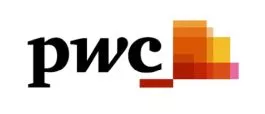- with readers working within the Metals & Mining and Securities & Investment industries
- within Employment and HR, Privacy and Environment topic(s)
QuickTake
The European Accessibility Act (EAA) and its national implementation in the Grand Duchy of Luxembourg, represent significant legislative efforts to harmonise accessibility requirements related for goods and services within the EU Single Market. The EAA, as a European Union (EU) Directive, mandates that EU Member States transpose its provisions into national law by 28 June 2022, with these national laws becoming effective as of 28 June 2025. The implementation process in the Grand Duchy of Luxembourg was concluded by the adoption of the law of 8 March 2023, as amended by the law of 29 August 2023 (Law). This EU RegCore provides a detailed comparison of the EAA and the Law, highlighting the specific adaptations made by Luxembourg to align with the EAA while addressing national particularities.
Key Takeaways
The EAA was implemented into the Luxembourg legal framework through the Law, hence complementing several pre-existing laws in this area.
For instance, the accessibility of the built environment, as outlined in Article 4, Paragraph 4 and Annex III of the EEA, is enshrined in the law of 7 January 2022, which pertains to the accessibility of public places, public roads and collective residential buildings (2022 Law). The 2022 Law mandates accessibility not only for public places, public roads and collective housing buildings in the public domain but also extends this obligation to the private domain, exceeding the EAA's scope for the built environment.
Additionally, measures related to the reception of emergency communications directed to the single European emergency number '112' or other national emergency numbers is dealt with through separate laws and regulations.
The remaining sections of the EAA have been transposed into the Law with a delay of almost one year. As of the writing of this EU RegCore, no règlement grand-ducal has been published and the OSAPS (as defined below) website is not yet operational.
Adhering to its long-standing principle of transposing the whole directive and nothing but the directive, the Luxembourg legislator directly references Annex I of the EEA, which sets the accessibility requirements for products and services. The Law regulates general accessibility conformity requirements (under Chapter 3), obligations of economic operators in the product sector (under Chapter 4), obligations of service providers (under Chapter 5), the conformity assessment and CE-marking procedure and the surveillance of products and services. The newly introduced obligations for manufacturers, importers and dealers (as addressed in the EAA under Articles 7, 9 and 10) are also reflected in the Law (Articles 8, 11 and 12).
Particular attention should be paid to Chapter 2 of the Law, which establishes a new office for monitoring the accessibility of products and services (Office de la surveillance de l'accessibilité des produits et services, OSAPS) reporting to the Minister for Disability Policy (ministre ayant la Politique pour personnes handicapées dans ses attributions). The missions of the OSAPS include notably:
- Conducting surveillance of products and the conformity of services in the Luxembourg market, including verifying CE marking conditions and the EU declaration of conformity as provided by the Law;
- Implementing appropriate control mechanisms to verify that derogations from accessibility requirements are justified;
- Providing guidelines and tools for micro-enterprises;
- Informing and raising public awareness about OSAPS, its responsibilities, decisions, the identity of national market surveillance authorities, and how to contact them, making this information available in appropriate formats upon request;
- Collecting necessary data for statistical studies on the needs of disabled people and those with functional limitations regarding the accessibility of products and services covered by the EAA, in collaboration with competent national bodies;
- Transmitting necessary information to the market surveillance department of the Luxembourg Institute for Standardisation, Accreditation, Safety, and Quality of Products and Services (ILNAS) to establish and update the general market surveillance program, which consolidates sectoral market surveillance programs.
The content of this article is intended to provide a general guide to the subject matter. Specialist advice should be sought about your specific circumstances.
[View Source]

